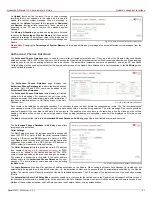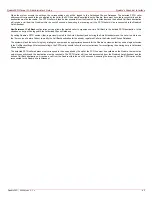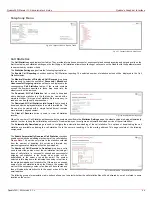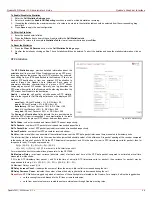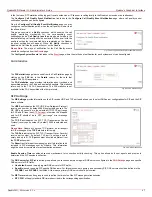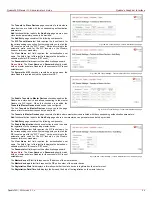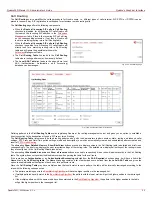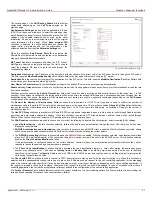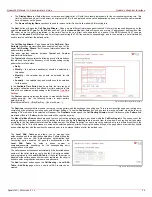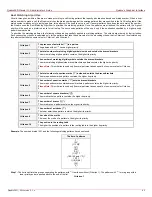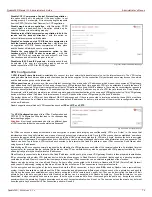
QuadroFXO Manual II: Administrator's Guide
Quadro's Graphical Interface
QuadroFXO; SW Version 5.1.x
55
Call Routing
The Call Routing service simplifies the calling procedure for Quadro users, i.e., different types of calls (internal, SIP, PSTN or IP-PSTN) can be
placed in the same way. SIP registration is not needed for extensions to make routing calls.
The Call Routing page offers the following components:
•
When the Route all incoming SIP calls to Call Routing
checkbox is disabled, for all incoming SIP calls Quadro will
first search the incoming SIP address in the
table. If found, the incoming SIP call will ring
on the corresponding extension. If not found, Quadro will
look for a matching routing rule in Call Routing table.
•
When the Route all incoming SIP calls to Call Routing
checkbox is enabled, for all incoming SIP calls Quadro will
directly look for a matching routing rule in Call Routing
table and will ignore the possible matches in the
Extensions
Management table.
•
The Call Routing Table link leads to the Call Routing
table where routing patterns may be manually defined.
•
The Local AAA Table link leads to the page where local
AAA (Authentication, Authorization, and Accounting)
database can be managed.
Fig. II-103: Call Routing page
Fig. II-104: Call Routing table – brief preview
Defining patterns in the Call Routing Table avoids registering Quadro at the routing management server and gives you an option to establish a
direct connection to the destination or to use a SIP server for call routing.
The Call Routing Table lists manually defined routing patterns along with their parameters (pattern number, state, routing and inbound caller
settings, RTP Proxy and Date/Time period settings, metric and description), as well as automatically created and undeletable patterns created as a
result of
.
The alternating Show Detailed View and Show Brief View buttons are used to display entries in the Call Routing table in detailed and brief views
correspondingly. The brief view displays the most important settings of the routing rules. The detailed view displays all settings of the routing rules as
they are configured in the Call Routing Wizard (see below).
The alternating Hide disabled records and Show all records buttons are used to respectively hide or show disabled records in the Call Routing
table. The system does not consider the disabled records when parsing the table for the call route.
If the route has an Authentication or an Authentication&Accounting selected from the AAA Required checkbox group, it will have a link to the
Users List in the Call Routing table. The Users List page contains a list of authorized users defined from the Local AAA Table and gives the
option to enable/disable authentication of each user for a particular route.
Since the Call Routing Table may have multiple entries that could match to same pattern, the table will be internally rearranged according to the
rules with the following consequences:
•
The pattern matching best to the
will have the higher position in the rearranged list
•
If multiple patterns equally match to the
, the pattern with the lower metric will get the higher position in the rearranged
list
•
If the multiple patterns with the same metric have been matched to the
the pattern in the higher position in the table
will get the higher position in the rearranged list.

